Copyright 2020 - 2021 irantour.tours all right reserved
Designed by Behsazanhost
Visit around Isfahan Province
Visit around Isfahan Province
The province of Esfahan is the main tourist destination of Iran for different good reasons. Its abundance of tree-lined boulevards, Persian gardens, and important Islamic artistic buildings like mosques, palaces, bazaars, and Caravanserais give it a visual appeal unmatched by any other Iranian city and the many artisans who work there strengthen its reputation as a living museum of traditional culture. Walking throughout the historic bazaar, the scenic bridges, and the Unesco World Heritage site will surely be one of the highlights of your holiday. This diversity of unique historical sites is not limited to Isfahan's city but also you can find other ones in cities around the capital of Isfahan Province.
There are many historical and cultural monuments around Isfahan province that are worth visiting.
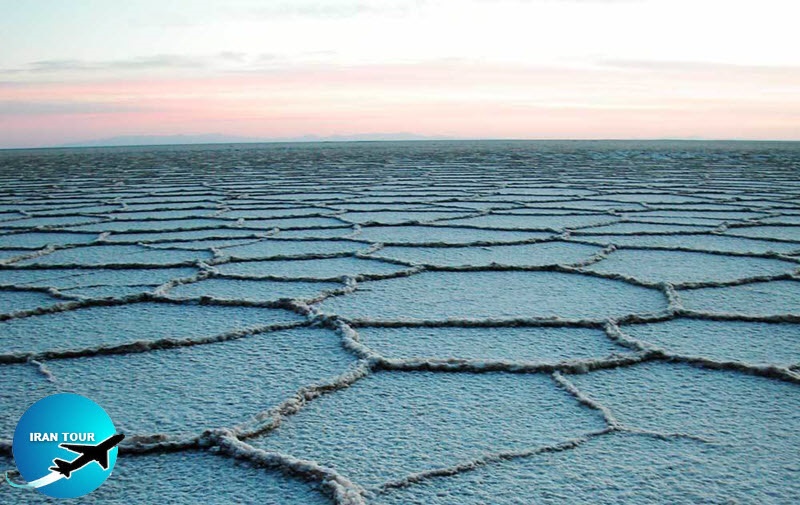 |
Aran o Bidgol
Maranjab Caravansary has been built during the Safavid Period, in Aran 70 km east of Kashan near Salt Lake. A Qanat (aka Kariz) flowing near the inn in the salty desert supplies potable water. Maranjab is also known for its fascinating sand dunes and Astro-tourism. Nooshabad underground city, a real interesting tourist-attracting site, is said to be built before Islam. Two sites in this town have been prepared for excavations by archaeologists. Nooshabad was used as a shelter during enemy invasions and the Qanat water flowed to gardens and homes.
Ardestan
The Congregation (Jame') Mosque in Ardestan was built by Seljuks. It is equipped with a Shabestan, a brick dome, and four Evans. A tablet in Kufi and
 |
| Zayande Rood Rafting Program |
Chadigan
Chadegan is cooled by a dam constructed on the Zayandehrud River. Vacationers sail in the reservoir behind the dam and or fish during the sporting season.
Fareydan
Fareydan homes Abdollah and Ibrahim tombs, an Armenian army camp, historic Noghal Bridge, Reissi House, several Armenian churches, Siah Darreh waterfall, and several springs.
Golpayegan
Golpayegan is a known city of Kebabs. The most unique and important historical attraction of Golpayegan is the petroglyphs. Tang e Gharghab and Teimareh are the most famous known collection of these in Tang e Gharghab and Teimareh. In Tang e Gharghab their simple petroglyphs as a circle and a dot to more complicated and decorated ones as a hunter or a
The Friday Mosque of Golpayegan is a building of high architectural standards, which experienced many turns in its history through the past nine centuries. This alone would justify a thorough examination. Besides, the exploration of the mosque can contribute to clarifying overarching questions concerning the history of mosque architecture in Iran.
The traditional bazaar of Golpayegan with a wide entrance and bricked ceiling is very similar to Seljuq's buildings. Chaharsoogh (EN: four-side) bazaar is accessible from the city's mosque and is located in front of Golpayegan city's minaret. Googad Citadel was used as a caravansary for businessmen during the old times. A room currently used as a special suite was designated for kings. The citadel is currently used as a luxury hotel. Golpayegan minaret with an 18-meter height is called "Mill Golpayegan" which is among the fifth tallest minaret in the 5th century (AH) and belongs to the Seljuk period. It is located on Imam Khomeini Avenue and in front of Fanoos park.
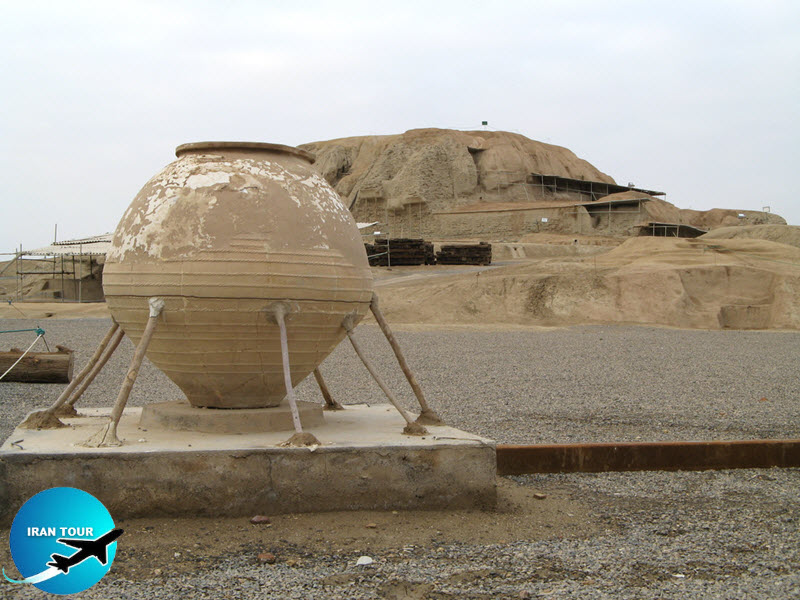 |
| Sialk Hills dates back to 10.000 years ago |
Kashan
Kashan is a complex of historical and natural attractions of Iran itself. There are too many tourist-attracting sites to mention here but some of the most important attractions are listed below Niasar is a village with a Fire Temple, a Mithraist cave, a waterfall, rose gardens, and distilleries, located 20 km west of Kashan. Experts believe that the fire temple was built at the beginning of the Sassanid Period. The Temple incorporates a fire temple and tombs of celebrated figures. The village is one of the most well-known tourist-attracting destinations of Iran.
Boroojerdi House in Kashan is a
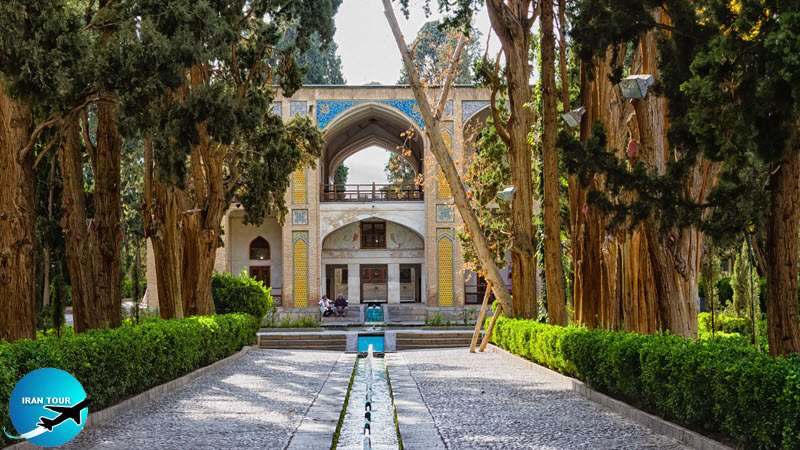 |
Fin Feen Garden (Orchard) is a typical Iranian orchard (aka Persian Garden) with a big bath inside it. It was built during the Safavid Period and was expanded and glorified by the Qajars. Fin Orchard covers an area of 23000 sq. m including a central yard surrounded by walls and parapets and towers. It is far superior compared to many orchards in the country in beauty and symmetry. Kashan Museum is set west of Fin Orchard and displays 400 antique objects from Seventh Millennium BC until contemporary times. The Jame (Congregation) Mosque in Kashan is another important monument that was built by the Seljuks. The mosque was devastated by repeated earthquakes and repaired during Safavid and Qajar periods. Emadi Mosque was built during the first century and was repaired in the 14th century. It is equipped with a fine prayer niche and a gold-coated altar. The altar was stolen and is now being preserved in a museum in Berlin.
The double story Aqa Bozorg Seminary is another precious pile in Kashan. A dome, an altar, several porticos, a portal, a vestibule and wind traps, and a Shabestan have been constructed on the second floor of the Seminary. The first floor or the basement houses the cells of the religious students and a big hall serves as a classroom for the religious students.
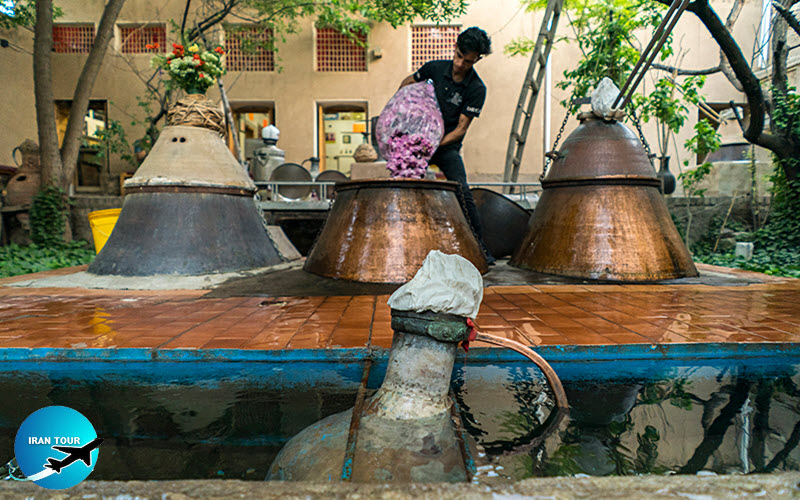 |
Tappeh Sialk is a large ancient archaeological site in a suburb of the city of Kashan, close to Fin Garden. The culture that inhabited this area has been linked to the Zayandeh Rood Culture. The Sialk ziggurat was built around 3000 BC. A joint study between Iran's Cultural Heritage Organization, the Louvre, and the Institut Francais de Recherche en Iran also verifies the oldest settlements in Sialk to date back to 5500-6000 BC. Sialk and the entire area around it is thought to have originated as a result of the pristine large water sources nearby that still run today.
Khomeinishahr
Khomeinishahr is proud of its Atashgah (fire temple) which is constructed on Kuh Sangi (Stone Mountain). It is the remnant of an Achaemenid or Sassanid building in which fire was burning until the 10th century AD. Besides, there is Kohan Dezh Tower, several tombs of saints,
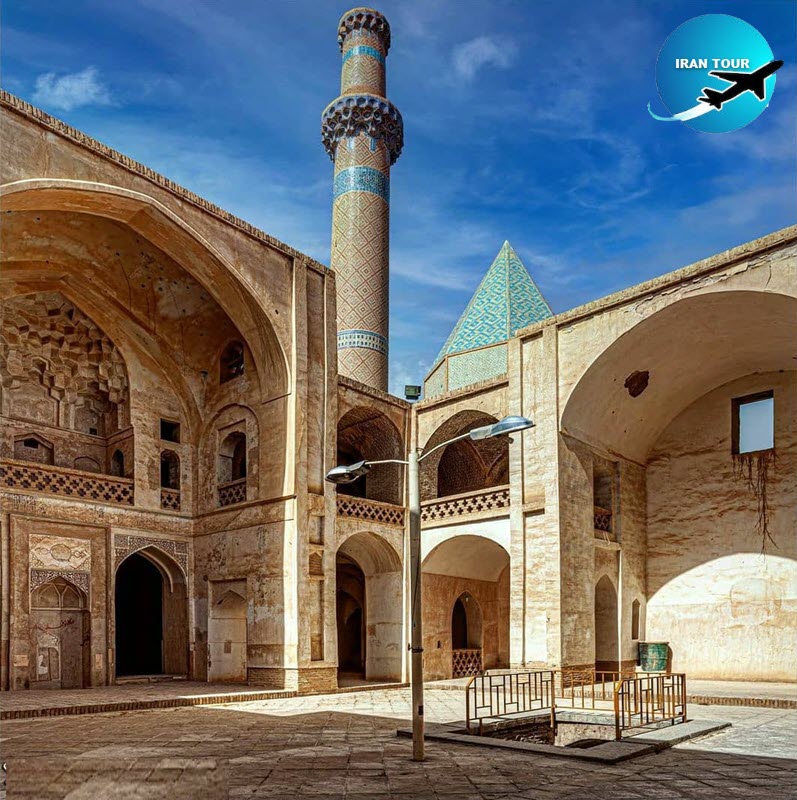 |
Natanz
Natanz Jame's Mosque incorporates a minaret, a monastery, the tomb of Sheikh Abdolsamad, and a domed S
Semirom
In Semirom the traveler has a chance to see the Mokhtar Fortress, two mosques, several tombs of saints, Solomon's throne and footprint (believed to be the footprint of Solomon), and the mountainous beautiful nature including the Semirom waterfall.
Shahreza is proud of Aminabad Caravansary, a pigeon tower, Jaja Fortress, several mosques, and tombs of saints.
Nain
- Details
- Category: Esfahan Tourism